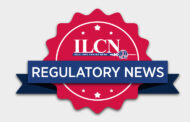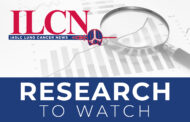
Harpreet Singh, MD
Lung Cancer Considered, the official podcast of the IASLC, spoke with Harpreet Singh, MD, Director of the Division of Oncology 2 at the US Food and Drug Administration (FDA) and expert in both geriatric and thoracic oncology. Podcast host Stephen Liu, MD, and Dr. Singh discussed the details of the FDA’s drug approval process and how it differs from approval processes of other international organizations, such as the European Medicines Agency (EMA). Dr. Singh also provides her insights on the processes for full approval versus accelerated approvals, the different pathways to approval, and even COVID-19 accommodations. An edited portion of the transcript appears below. Listen to the full podcast, including Dr. Singh’s perspective on her own career journey and advice for trainees here.
Dr. Liu: For a US-based FDA approval, do things like cost or value lend any consideration?
Dr. Singh: No. It is certainly not in our purview. We are governed by the Congressional Code of Federal Regulations. We do not take cost into account when considering drug approvals, nor do we take into account practice of medicine. And by that, I mean that an FDA approval deems something safe and effective, but an approval is not a mandate or even recommendation for use. We believe that the practice of medicine should be left to providers. So no, we do not consider cost or value. That is something that is taken care of in other parts of our government and of our health care system.
Dr. Liu: That is an important distinction—the difference between an approval and a recommendation. It is different in different parts of the world, right?
Dr. Singh: Absolutely. All global regulatory agencies have different approval processes, but Europe–the EMA–is quite unique in that they have a “start and stop of their review clock.” Basically, committees made up of rapporteurs from different parts of Europe are formed. Each rapporteur will be assigned a certain indication or a certain approval, which they evaluate and then take to a committee, and then the clock stops for a period of time, and then it resumes.
What types of data the EMA will accept, and then, subsequently, what the approvals cover also differs among regions. So, because lung cancer ultimately is becoming a term for a collection of subsets of rare molecular mutations, there are a lot of single-arm data leading to FDA approvals. Although the oncologists at the EMA may consider these data acceptable, it is a little bit more of a hurdle to then get coverage for those drugs, because the governing body, which covers drugs in Europe, often requires time-to-event endpoints (PFS or OS for example) in order to add a value or assign a value to the drug, which certainly, of course, requires a randomized trial. So, there are some differences in processes, but the agencies do fundamentally view drug development in similar ways, as evidenced through our conversations over several years.
Dr. Liu: Without discussing a specific drug, how does the FDA address studies that use a control arm that, at the time of approval or review, is no longer the standard of care?
Dr. Singh: There are two things to consider here. When we are evaluating a new drug or a new drug application, it does not have to be better than the best of what is currently available. The new agent just has to be better than what it was compared against. I think the targeted therapy space is a good example where perhaps a newer, better targeted therapy has been approved for a specific mutation. We know that there are ongoing trials that may have just begun that are using an outdated comparator, or a “low-hanging fruit,” or there is just one approved agent in a space. In these cases, the FDA will talk with the company sponsoring the trial and suggest what the comparator should be. But the problem is global availability; trials rarely are conducted solely in the United States. So, these are global trials, which creates an issue with the control arm, but also there is no regulatory standard requiring comparison with the best-available agent.
I want to note, however, that if a company came to us today and said they want to design a frontline trial in which an unselected population of US patients will be enrolled, and the control arm will be chemotherapy, we would say this is not an appropriate trial.
Similarly, if a drug company conducted, for example, a completely ex-US trial in the second-line setting—maybe replicating some of the earlier US immunotherapy approvals with single-agent immunotherapy as a second-line option compared to docetaxel or chemotherapy alone—and most of the patients in that frontline setting had not received immunotherapy, we would also not accept that trial. Because the therapy is not applicable to the US population because those frontline patients would not have gotten the standard of care for their region. So, there are some nuances there.
Dr. Liu: You mentioned earlier “accelerated approval” and “full approval.” What is the difference between those two?
Dr. Singh: That is a great question that comes up a lot. I will start with the full or traditional/regular approval. We call it many things, but it just means that once the company receives this approval, they are not obligated to further confirm clinical benefit.
The FDA has deemed that this is a favorable risk–benefit, and that the endpoint is something that is not an early clinical endpoint like response rate, for example; usually these are trials with an overall survival endpoint, with robust results or PFS.
An accelerated approval is a pathway. It is decided at the time that a plan is decided for a drug. This pathway was born out of the HIV/AIDS epidemic in 1992, as a mechanism to get drugs to patients in a more urgent fashion. Most of the accelerated approvals are in oncology using what we often refer to as an early clinical endpoint. (We used to say surrogate endpoint, but we do not think that that is actually intellectually honest anymore because not all response rates actually translate into long-term benefit.) In oncology, this equates to the use of overall response rate with durable response. We view this as an endpoint that it is just what it sounds like. It is clinical benefit but with an earlier signal than a time-to-event endpoint, like PFS or OS. So overall response rate is the most common endpoint that we use in our accelerated approvals. Because it is an early endpoint, we do then ask the company to confirm this clinical benefit, which can be done in the form of a randomized trial.
Common examples of this are the early targeted therapies, like for EGFR and ALK mutations, for which initial approvals were in refractory settings based on response rate. Then, to confirm clinical benefit, a randomized trial was done to show a time-to-event benefit, such as PFS, and then extended to show OS.
We think this has been a really great mechanism to get effective therapies to patients more quickly than they would have otherwise been available. We do make mistakes sometimes. There were two withdrawals of accelerated approvals in SCLC in the past few months because these were accelerated approvals based on early response rates ranging from 12% to 20% in a very refractory setting in the population of patients with SCLC. The confirmatory trials failed to confirm clinical benefit. And so, in consultation with the FDA, those accelerated approvals were withdrawn. It should be noted that the landscape has totally changed in SCLC, with most patients getting immunotherapy upfront.
Dr. Liu: That explains a lot. And so, accelerated approvals are always going to require some sort of a confirmation to move on a full approval. What about priority review and breakthrough designation? These mean different things?
Dr. Singh: They do. Breakthrough designation is something that we grant companies or investigators early in their development process based on early clinical data. So, this could be based on very few numbers of patients and small randomized trials. It basically means that that drug development program has the potential to be transformative in that disease space. And, as a result of being granted breakthrough designation, we really take an all-hands-on-deck approach to working with that company and those investigators to bring their drug to market, should the results pan out as they enroll more patients. Particularly for new drugs, the breakthrough designation is a wonderful mechanism to get the drug to patients sooner.
Priority review is a designation that is granted at the time that an application is submitted. A lot of oncology applications do get priority review because the criteria for this include that the disease or condition must be life threatening and the therapy would contribute meaningfully to society; therefore, these drugs have priority review over other drugs or other areas within the FDA.
Dr. Liu: Thank you certainly for all the work you are doing, but in the background, we are in the midst of a pandemic. How has that affected this whole process?
Dr. Singh: It has affected the approval process. I think, fortunately, most of the approvals in the lung cancer space were not affected in a way that was visible to patients or providers. We were able to get approvals out on time or well ahead of time. Manufacturing has been impacted because we have entire teams of people who travel to the sites where drugs are being manufactured to make sure that conditions are sterile and that all of the boxes are checked, so to speak. These site visits were limited by the pandemic so there were a few drugs within the oncology space that were delayed.
I am really proud of our team. We have a really robust thoracic oncology team at the FDA. We went completely remote in March 2020, and they never skipped a beat. They continued their review work, juggling family responsibilities and everything we all have been managing during the pandemic. We kept patients first.
Dr. Liu: We have definitely noticed, and we have been very impressed. I think the FDA has gone above and beyond. Are there any specific initiatives that the FDA has launched in response to the COVID-19 pandemic?
Dr. Singh: There are two that I think are worth mentioning. One was FDA-wide and focused on how to keep patients safe in a clinical trial setting, so decentralization. Some people use the term hybridization, because I think it is very difficult to do a fully decentralized trial, but it was basically providing a pathway for investigators and sponsors to continue to run their clinical trials, but to keep patients safe. This involved remote visits, electronic consents, and shipping of investigational drugs to patients. Many patients and providers want this to continue post-COVID.
The second initiative was provision of drugs in formulations, allowing patients to visit the clinic less frequently. Included in this was the pembrolizumab approval, which allowed patients to get pembrolizumab once every 6 weeks, as opposed to every 2 or 3 weeks, depending on their regimen. Although this was something we probably would have approved in the absence of COVID, I think we certainly expedited that approval. There are several other similar approvals that were granted.
Want to know more? Listen to the full interview here.




